・子どもが「ママ(パパ)、見て!」と呼んでくれるのに、つい家事や仕事で忙しくしてしまい後回しにしてしまう…
・「また後で」「ちょっと待って」ばかり言っていたら、子どもが言わなくなってしまいそうで不安
・「見てほしい」という気持ちをどう受け止めればいいの?
子どもが「見て!」と声をかけてくるときは、「今この瞬間」を一緒に共有してほしいサインでもあります。大人から見ると些細なことでも、子どもにとっては大きな発見や誇らしいできごと。それをきちんと受け止めるかどうかで、子どもが安心して自己表現できる環境が整うかどうかが変わってくるのです。
このブログでは、忙しい日々の中でも子どもの「見て!」を大切にし、小さな声をスルーしないためのコツについて、具体的なアイデアをお伝えします。
1.子どもの「見て!」が持つ意味
子どもが「見て!」と言う背景には、多くの場合「自分のことを認めてほしい」「一緒に喜んでほしい」という気持ちがあります。絵を描いた、積み木を積んだ、ジャンプが高くできるようになった――どれも子どもにとっては大きな成長や成功体験。その喜びを、大人と共有したいのです。
(1) 自己肯定感を育むチャンス
「見て!」にしっかり応えてあげることで、子どもは「自分は大切にされている」「認めてもらえるんだ」という安心感を得ます。それが自己肯定感の土台となり、さらに自分から新しいことに挑戦しようとする意欲につながります。
(2) 親子のコミュニケーションの要
子どもが「見て!」と声をかけてくれるのは、親子のやり取りを深める大きなチャンスです。親が「おお、すごいね」「どんなところが工夫できたの?」と質問を返すことで、子どもは自分の考えや工夫を言葉にしやすくなります。
(3) “小さいうち”が大事な理由
幼児期から小学生にかけての時期は、心の成長が著しい時期。今この瞬間に子どもの声をスルーしてしまうと、年齢が上がるにつれ「どうせ言っても聞いてもらえない」という思い込みが積み重なり、自己表現やコミュニケーションが減ってしまうリスクもあります。
2.忙しいときでも応えやすくする工夫
子育て世帯は常にやることが多く、子どもの「見て!」に100%応じるのは現実的に難しい場合もあります。しかし、ちょっとした工夫でスルーを減らすことができます。
(1) 「待っていてね」を悪者にしない
どうしても手が離せないときに「今は無理」と思っても、すぐにシャットアウトせず「あと5分待ってくれる?」「時計のここまで針が進んだら見るね」といった目安を伝えると、子どもは「ちょっと待てば見てもらえるんだ」と思えます。大事なのは、その約束をできるだけ守ること。
(2) 片手間でも「聞いているよ」のサインを出す
調理中や片付け中など、子どものところへ駆け寄れないときは、「うん、見てるよ」「本当?どんな風になった?」と声だけでも返事をしてあげると子どもは安心します。アイコンタクトや笑顔が加われば、なお効果的です。
(3) “一緒にやる時間”を先に作る
忙しい日の中でも、最初に10分だけ子どもとじっくり遊んだり、話を聞いたりする時間を確保すると、子どもは満たされた気持ちになりやすく、「後でね」と言われたときも少し待てるようになります。先に少しでも子どもと関わることで、子どもにとっては“見てもらえた”という安心感が高まります。
3.具体的なコミュニケーションのヒント
子どもの「見て!」に対して、どうリアクションすればいいのか迷うこともあるでしょう。ここでは、親子の会話を深めるための簡単なヒントをご紹介します。
(1) 「すごいね」だけで終わらせない
「すごいね」「上手だね」といった褒め言葉は大切ですが、それだけで会話が終わってしまうと子どもの成長を広げるチャンスを逃すことも。「どうやって作ったの?」「一番工夫したのはどこかな?」など、子どもが自分の思いを言語化できるような質問を投げかけると、対話がふくらみます。
(2) 子どもの視点に目線を合わせる
子どもが描いた絵や作った作品を見るとき、ただ上から目線で「ふーん」ではなく、なるべく子どもの身長に合わせたり、一緒に作品に顔を近づけたりして、「ここはどういう意味?」と興味を示すと、子どもはより話しやすくなります。
(3) 感想やリアクションを伝える
子どもの行動を見たとき、「ママはそれを見て、こう感じたよ」「パパはここが面白いと思った!」など、自分自身の感想や気づきを言葉にして共有すると、「見てもらえたんだ」と子どもも納得しやすくなります。
4.「見て!」の先にある学びと成長
子どもの「見て!」に応えることは、単に子どもの承認欲求を満たすだけでなく、将来的な学びや成長にも大きく影響を与えます。
(1) 発想力や表現力の向上
自分が作ったものや行った行動を誰かに見てもらうことで、子どもは「もっといい方法はないかな」「次はこうしてみよう」と考えるきっかけを得ます。結果的に、遊びや学びの深度が増し、発想力や表現力が育っていくのです。
(2) 親子の信頼関係を強化
「ちゃんと聞いてもらえる」「見てもらえる」という安心感が、親子の間に信頼関係を築きます。子どもは、困ったときや悩みがあるときにも「お父さん(お母さん)なら聞いてくれるはず」と、素直に相談しやすくなります。
(3) 自己表現の継続
子どもが「見て!」と言いやすい環境だと、自然と自己表現の機会が増えていきます。これはコミュニケーション能力を高めるだけでなく、自分の気持ちや考えを他者と共有する習慣として、大人になってからも役立つ大切な力となるでしょう。
まとめ
子どもの「見て!」は、親子が日々の喜びや発見を共有するための大切なサインです。大人にとっては些細に思えることでも、子どもにとっては大きな挑戦や成果であり、その瞬間をともに分かち合うことで子どもは安心感と達成感を得ます。
忙しい中で全てに完璧に応えるのは難しいかもしれませんが、ほんの少しの工夫と意識で子どもの声をより受け止めやすくなるはずです。「後で見る」約束を守る、簡単な質問で子どもの思いを引き出す、ときには自分のリアクションや感想も伝える――こうした積み重ねが、子どもが自分を表現し続ける土台となります。
「見て!」をスルーしないことは、子どもの心を育む上での大切なポイント。ぜひ、今日から少しだけ耳と目を傾ける時間を作ってみてください。その小さな積み重ねが、将来的に子どもの自己肯定感や表現力を支える大きな力になるでしょう。
- Are You Ignoring Your Child’s “Look at Me!”? Tips for Valuing Their Small Voices
Are You Ignoring Your Child’s “Look at Me!”? Tips for Valuing Their Small Voices
- Your child calls, “Mom/Dad, look!” but you’re too busy with housework or work to pay attention.
- You feel guilty saying, “Later, okay?” or “Wait a minute,” fearing they’ll stop calling you altogether.
- You wonder how to truly acknowledge “Look at me!” and why it matters.
When a child says “Look at me!” they’re sending a signal that they want you to share the “here and now” with them. What seems trivial to an adult can be a proud achievement or new discovery for a child. Whether or not you respond becomes a key factor in creating an environment where children feel safe to express themselves.
In this blog, we’ll discuss practical ways to ensure you don’t miss these moments and how to handle your child’s “Look at me!” calls with care, even amidst a busy schedule.
1. Why Children Say “Look at Me!”
Behind a child’s “Look at me!” is often a desire for recognition and shared joy. Whether it’s a drawing, stacking blocks, or jumping higher than before, these feats represent growth and success. Children want to celebrate these triumphs with adults.
(1) Fostering Self-Esteem
By responding to “Look at me!” with genuine interest, children learn “I’m important,” which reinforces their sense of self-worth. This sense of validation encourages them to tackle new challenges with confidence.
(2) Building Parent-Child Communication
Your child’s “Look!” is a prime opportunity to deepen exchanges. When you reply with “Wow, that’s great!” or “How did you do that?” you encourage your child to articulate their thoughts and strategies.
(3) Why the Early Stage Matters
Young children, especially toddlers to early elementary schoolers, go through rapid emotional and developmental changes. Ignoring their voice during this pivotal stage may lead them to believe “No one listens anyway,” diminishing their willingness to express themselves as they grow older.
2. How to Respond Even When You’re Busy
Parents often juggle countless tasks, making it hard to give each “Look at me!” full attention. A few small adjustments can reduce instances of ignoring them.
(1) Don’t Demonize “Wait a Minute”
If you genuinely can’t break away, avoid shutting them out with a flat “No.” Instead, say “Could you wait five minutes?” or “When the clock’s hand reaches here, I’ll come look.” The crucial part is following through on that promise.
(2) Even Partial Attention Helps
If you can’t step away—maybe you’re cooking or cleaning—try to verbally acknowledge them: “Yes, I see!” or “Really? Tell me more!” This assures them you’re paying attention. Adding eye contact or a quick smile strengthens the impact.
(3) “Quality Time” First
If you can spend even 10 minutes focusing solely on your child at the start of a busy day—playing or listening to them—they’re more likely to feel secure and be patient when you say “later.” Offering them some undivided attention early on often satisfies their need to be seen.
3. Conversation Starters and Communication Tips
Parents might struggle with how to react beyond a generic “Wow!” or “Good job.” Here are a few ways to spark richer dialogue.
(1) Go Beyond “That’s Great”
While praising them is valuable, simply saying “That’s great” can end the conversation too quickly. Try: “How did you come up with that?” or “Which part was your favorite?” Encouraging them to explain their thought process fosters deeper communication.
(2) Align With Their Perspective
If your child shows you a drawing or craft, don’t just glance from above. Get down to their level or bring your face close to their work. Ask, “What’s this part here?” or “Why did you choose these colors?” to show genuine curiosity.
(3) Share Your Own Reactions
When you observe their actions, let them know: “I felt so impressed when I saw that!” or “This part really surprised me!” Expressing your own emotions reassures your child that you truly noticed and cared.
4. What Comes After “Look at Me!”
Validating your child’s “Look at me!” does more than fulfill their desire for approval; it can also shape future learning and development.
(1) Boosting Creativity and Expression
When a child gets recognition for their work, they’re motivated to explore new techniques or solutions: “How else could I do this?” or “What’s next?” This encourages deeper engagement with learning and play.
(2) Strengthening Trust
Knowing their voice is heard and appreciated builds trust between parent and child. When difficulties arise later, they’ll be more inclined to share, believing “Mom/Dad will listen.”
(3) Maintaining Consistent Self-Expression
A child who feels safe showing their work or discoveries will continue expressing themselves. This habit benefits communication skills and fosters a lifelong ability to share thoughts and feelings comfortably with others.
Conclusion
“Look at me!” is a vital cue that helps parents and children share daily joys and discoveries. Although such moments may appear small to adults, they represent a huge leap for children, and acknowledging them brings a sense of validation and achievement.
It’s not always feasible to respond perfectly in the midst of everyday chaos, but simple changes in approach—keeping promises, prompting children to explain their ideas, offering your own reactions—can make a real difference. Over time, these small gestures ensure a nurturing environment where a child feels safe to express themselves.
By avoiding the urge to brush aside “Look at me!” you play a crucial role in nurturing your child’s emotional well-being and communication skills. Starting today, try to devote a bit more attention whenever they call. This daily effort helps anchor self-esteem, creativity, and confident self-expression that will serve them well into the future.




コメント